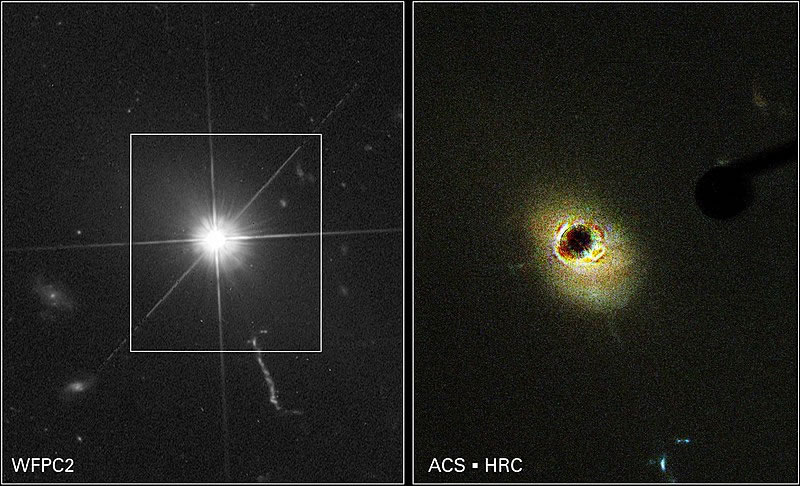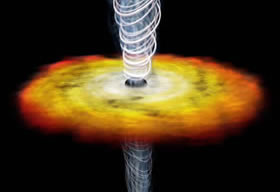Quasars
16.8 - Understand the major observational evidence in favour of the Big Bang theory:a) quasars (QSOs)
These stand for quasi-stellar objects. They appear like stars but are actually very different. They are believed to be galaxies that emit large amounts of x-rays, ultra violet light and sometimes radio waves. Quasars are believed to be caused by matter falling into a black hole at the centre of the galaxies, causing jets of matter to shoot out at high speed.
Quasars were first identified by their high redshift (how fast they are moving away from us) and emission of radio waves. They are typically billions of light years away from us and are the oldest objects that we know about.
1950s scientists detected them by radio telescope but were unable to detect a visible object associated with them until 1960. Their broad emission lines meant they were not stars. In 1962, scientists measured a source as it occulted the Moon, showing a large redshift in the spectral lines. This redshift was given the name "quasi-stellar radio sources.
Because of their age, scientists can tell a lot about the early period of the universe and estimate the type of star formation at the time. They fit within models of the big bang as the chemical balance, heat of the universe and levels of radiation needed are appropriate for the observed visual existence.
Mix & Match
Questions
- What are quasars?
- How did we discover them?
- What is special about them?
See Also
Links
- StarChild Quasars
- Imagine the Universe Ask an Astrophysicist: Quasars & Active Galaxies
- Dr. John Simonetti,Dept of Physics, Virginia Tech Quasars FAQ



 | © All Rights Reserved |
| © All Rights Reserved |